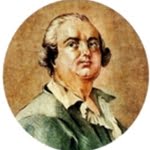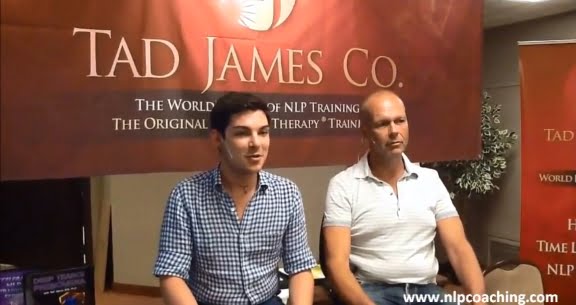
Count Alessandro di Cagliostro’s biography is shrouded in mystery. As far as it is known today, this was an assumed name for Giuseppe Balsamo (2 June 1743 – 26 August 1795), so we’re dealing with two names allegedly being the same person,or not! One was the “hypnotist” – although this is technically incorrect since the term hypnosis was not coined just yet – it will have to wait until James Braid and the middle of the 19th century – and the other was the “alchemist”. Nevertheless, there is no certainty about these two being one and the same person. Giuseppe Balsamo’s biography tells us that he was born and raised in Palermo in Sicily in one of Palermo’s most Arab quarters once called Al-Gadida (currently Albergheria). His family was quite poor yet his grandfather and his uncles made sure that he received a solid education. During his period as a novice in the Catholic Order of St. John of God, he learned chemistry as well as a series of spiritual rites
The mystique and mystery associated with Cagliostro survive until today. The numerous opinions associated with his name range from the “Quack of quacks” as quoted by Joe Nickell, to possessing incredible powers and being capable of making people do his bid only with his eyes. He also attempted to (and to a certain degree succeeded) in creating hi secret society. Of course opinions range according to people’s beliefs – however his “powers” are what we call today non-verbal hypnotic induction. We understand the process by which trance is induced and therefore (unfortunately for those who’d still like to believe in magic) the mystique is taken away.
According to the Skeptical Inquirer , in the Investigative Files Volume 19.1, March 2009, the author, Joe Nickell
writes:
“As the most versatile of all impostors, Cagliostro was by turns alchemist, forger of documents, prestidigitator, quack-salver, spirit conjurer, and procurer” (Francesco 1939, 209, 211), and that is only the short list.”
In spite of all the strange cluster of “qualities”, his life and activities have provided inspiration and fascination [pun intended] for many other artists, writers and film makers. No less than 38 works of art mentioning or inspired by Cagliostro from the 18th century until the present time are listed by Wikipedia. Here are only a few of them:
- Johann Wolfgang Goethe wrote a comedy based on Cagliostro’s life, also in reference to the Affair of the Diamond Necklace,The Great Cophta (Der Groß-Coptha) which was published in 1791.
- Alexandre Dumas, père. [the father] used Cagliostro in several of his novels (especially in Joseph Balsamo and in Le Collier de la Reine where he claims to be over 3,000 years old and to have known Helen of Troy).
- Aleksey Nikolayevich Tolstoy. wrote the supernatural love story Count Cagliostro [,].
- He is mentioned in the novel It Happened in Boston? by Russell H. Greenan. The narrator is reading the life of Cagliostro when he has his first reverie.
- He is mentioned in the novel Kun Lun by Kilburn Hall (2014) where it is revealed that Alessandro Cagliostro, Joseph and Giuseppe Balsamo are just a few of the names that time traveler Count St. Germain has used throughout history.
- Johann Strauß (Sohn) wrote the operetta Cagliostro in Wien (Cagliostro in Vienna) in 1875.
- The Polish composer Jan Maklakiewicz (1899-1954) wrote the ballet in three scenes Cagliostro w Warszawie which premiered in 1938.
- The opera Cagliostro by the Italian composer Ildebrando Pizzetti (1880-1968) was performed on Italian radio in 1952 and at La Scala on 24 January 1953.
- Friedrich Schiller wrote an unfinished novel Der Geisterseher (The Ghost-Seer) between 1786 and 1789 about Cagliostro.
- In an 1978 episode of the Wonder Woman TV series, a descendant of the Count, still attempting alchemy (and succeeding to the extent of turning lead into gold for a time, after which it turns back into its original form) is the villain, and Wonder Woman, in her Diana Prince identity, indicates that she faced his ancestor, the original Count Cagliostro, in the past.
- Cagliostro is a character in Robert Anton Wilson‘sThe Historical Illuminatus Chronicles.
- Cagliostro is frequently alluded to in Umberto Eco‘s novel Foucault’s Pendulum.
Count Alessandro di Cagliostro Induction
By Francesco Pellegatta
Well now we close with the last induction and we go back in time, before hypnosis was called hypnosis,
At that time hypnosis was called fascination, and Count Alessandro di Cagliostro was an Italian man. He was born in 1743 and there are different theories about him,. Many people said that he was the occultist Giuseppe Balsamo others said that Cagliostro and Balsamo were two different people,
The thing that made me love Cagliostro is that when I took the Hypnosis Trainers Training I was a demo subject for a presentation and that presentation was a non-verbal Cagliostro induction.
Another thing that we should know about Cagliostro is that he was arrested because he tried to create his own masonic order, I don’t want to talk too much about him because I want show you the magic of Cagliostro or better the Fascination of Cagliostro,.
Before I ask who wants to be the demo subject let me explain to you the best thing about this induction, I don’t even need to talk I just need eye contact, many people at that time were saying that Cagliostro has magical eyes and that he could control people just by watching them,.
Ok no more talking,.. now it is time to ask who would like to try the “Cagliostro’s eyes”,
Instructions for Induction
- Do “induction” staring in eyes but,
- , through and “around” the head, focus being behind the head
- Do suggestions
- Bring out of trance.
Source: Wikipedia


